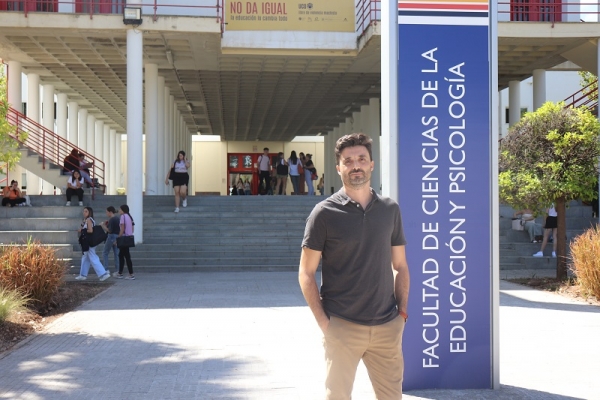Bilingual education programs, which began to be implemented in Spain in the mid-2000s, and were created, in part, to prevent inequalities from determining access to foreign language education (usually English) are characterized by precisely what they wanted to avoid: disparities in access. According to a study featuring participation by University of Cordoba Sociology Area researcher Alberto Álvarez de Sotomayor, Pablo de Olavide University researcher Juan Miguel Gómez Espino, and Ricardo Barbieri, a former student for a Degree in Primary Education at the UCO, access to bilingual primary education in Andalusia is shaped by a series of geographical, social and economic factors, which prevent families from choosing a bilingual center with equal opportunities.
Thus, factors such as the family's area of residence, economic level, and the possibility of attending public, semi-private, or private schools are those that end up limiting students' opportunities to access a bilingual school. If a family residing in the Polígono Sur area of Seville, for example, would like to choose this type of education for their children, this will be difficult, since none of the eight primary schools in their area are bilingual.
According to the study, published in the journal Language and Education, inequality is also the result of two political-administrative decisions. First, the voluntary nature of bilingual teaching programs; it is the schools that decide whether or not to adhere to this program, which, in itself, gives rise to possible inequalities between students the important area of learning English. Then there is the school admissions model, according to which, in the event of many requests for slots at a school, the Public Administration prioritizes "areas of influence," a territorial delimitation that (among other secondary factors) assigns families higher scores if they reside near the school.
Taking into account these two characteristics of the Andalusian educational system (and practically all of Spain), the research team studied, through cartographic and statistical analyses, the distribution of primary education centers in the 29 municipalities of Andalusia with more than 50,000 inhabitants. Although future studies will expand both the size of the municipality (to also include rural areas) and the teaching stage, focusing on Primary Education is key because, as Álvarez de Sotomayor explains, early ages are the most important when it comes to the acquisition of second languages and, therefore, the inequalities that could be generated are potentially greater during it.
Of those 29 municipalities, the researchers analyzed a series of factors that could influence inequality: whether or not the schools were bilingual, the type of school (public, semi-private or private), its area of influence, the economic level of the population that lives within that area, and the distance between the schools, among others. Based on these factors, the study found that the variable that most impacts access to bilingual education is type of school. Public schools offer bilingual education to a much lesser extent than semi-private or private ones. In fact, in the 29 municipalities studied, only 34% of public schools offered bilingual education, while in the semi-private schools the percentage rose to 72%. At private schools the figure was 62%, but not taking into account international schools, which do not fall within the Andalusian educational system and are not governed by Spanish legislation. In the words of Álvarez de Sotomayor "the inequality between school types is great, and is also associated with the socioeconomic issue, because not all people can afford to attend private or semi-private schools."
There are areas of influence where many bilingual schools are concentrated, while there are others that have none, or few. Therefore, depending on where they live, families have more or fewer opportunities to access this type of education. This is related to the population's economic level; areas of influence with moderate or high economic levels are those with the most bilingual schools, while areas of influence that coincide with the poorest neighborhoods have hardly any bilingual centers, or none at all.
Knowing about opportunities for bilingual education becomes more relevant because families don't choose in a vacuum, but between a series of opportunities. "It's important to know families' real opportunities to access this type of education. Based on this we will know the extent to which a program created to mitigate the inequality that existed in terms of foreign language levels between social classes, or between rural and urban areas, is helping to mitigate these inequalities or not. What we are seeing is that it is doing the opposite, to reproducing those inequalities," says Álvarez de Sotomayor.
To alleviate this situation the research team proposes three possible solutions: reconfigure the areas of influence, change the admissions model, or encourage schools located in low-income neighborhoods to opt for bilingual education.
EQUIBIL Project
The study is part of a broader one funded by the Ministry of Science and Innovation as part of the 2021 Knowledge Generation Projects, under the title "Equity and bilingual education (Spanish-English) in school quasi-market contexts. A study of the Andalusian case " (EQUIBIL). This project aims to expand knowledge of the implications of Spanish-English bilingual school programs in terms of educational equity. To this end, it has two general objectives: first, to study equal opportunities in access to them by analyzing the dynamics of school markets and the logic of the main agents that make them up, paying special attention to possible effects on school segregation processes; second, to evaluate the effects of these bilingual programs on equal educational opportunities in terms of academic and linguistic achievement in English.
Reference:
Alberto Álvarez-Sotomayor, Juan Miguel Gómez-Espino and Ricardo Barbieri, “Mapping the opportunities of attending bilingual schools in Spain”, Language and Education, https://doi.org/10.1080/09500782.2023.2240294.


